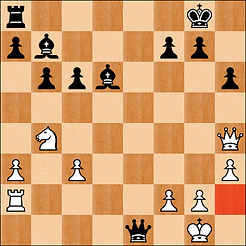Restless Knights
The Basic Checkmating Patterns
Knowing and being familiar with certain checkmating patterns is one of the best things you can do for your chess progress. Firstly, by knowing the patterns, you can use them again and again to win your games. The nice thing is that even though the positions are different, key elements of the patterns remain the same. You recognize them, and before you know it, you've checkmated your opponent. Secondly, a checkmating pattern may be the end result of winning combination. By knowing the pattern well, you'll more easily spot the combination in time. Put differently, you'll see the checkmate many moves in advance, which will be the reason why you do a beautiful combination or sacrifice. On this page you'll find the the mating patterns that I recommend learning first, because they are all very common in real games, and so will be very useful to you.
Electric Fence Mate
The Electric Fence is an extremely effective method when there are few pieces left on the board. With two rooks, a rook and a queen, or even with two queens, it's very easy to checkmate the bare king, as you can see on the diagrams below.




Queen Mate
Many mating patterns have names, and because the queen can mate in so many different ways, we don't want to call them all the Queen Mate. Therefore, the Queen Mate is when the mated king is on the edge of the board and the queen steps right up to him and gives him that lethal kiss of death (gives him the kod). She needs to be protected by one of her friends, but it doesn't matter which one.





Rook Mate
The rook mate is important to know, if only for the reason that the most common endings just happen to be rook endings. With a rook and a king, we can checkmate the enemy king on the edge of the board (on the 1st and 8th ranks and on the a- and h-files).



Back Rank Mate
The Back Rank Mate happens quite frequently in chess, and may well come as the end result of a pretty sacrifice. If you look at the first diagram, you'll notice that the mated player hasn't moved any of the pawns in front of his king. Although it is actually recommended to keep the pawns close to the king, it is nevertheless often good to move one or two pawns forward just to give the old king a little breather. On the diagrams with a red square, the mated player did try to create an escape, but the opponent has that square covered, and mates.






Ready to level up? Here you will find more checkmating patterns that are also very useful to know. --->